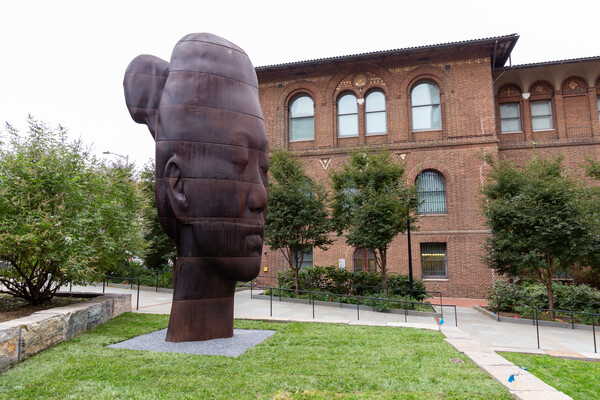
(From left) Doctoral student Hannah Yamagata, research assistant professor Kushol Gupta, and postdoctoral fellow Marshall Padilla holding 3D-printed models of nanoparticles.
(Image: Bella Ciervo)
Karl Nycklemoe is an Consortium Dissertation Fellow at Penn’s McNeil Center for Early American Studies and a Ph.D. Candidate at Stony Brook University. His current research focuses on how U.S. expansionism and settler-colonization were contingent on usurping Indigenous communities’ aquatic governance by remaking the region’s waters—lakes, rivers, wetlands, and floods—into an “open” navigable resource.
“I found that historians had not seriously considered the Upper Mississippi’s history before 1850,” Nycklemoe says. “The watershed was not a wilderness, but part of a vast network of connections facilitated by Indigenous polities and peoples, and the community of other-than-humans who knew the water as their home.”
Nycklemoe approached his dissertation project with the question “Why are some parts of our world deemed replaceable, and others venerated? Why is it that the Mississippi is seen as both a body to reengineer and a place to preserve?”
As a MCEAS Fellow, “I find reviewing archival collections with only scant descriptions in finding aids to be the most rewarding part of the research process,” he says. “Truthfully, sometimes this means spending hours going through papers that, in the end, had little to say about my current research. Thankfully, I have had the fortune to find a document that not only informs my research, but pushes me to reconsider the life and influence of rivers in history.”
Read more at The McNeil Center for Early American Studies.
From The McNeil Center for Early American Studies

(From left) Doctoral student Hannah Yamagata, research assistant professor Kushol Gupta, and postdoctoral fellow Marshall Padilla holding 3D-printed models of nanoparticles.
(Image: Bella Ciervo)

Jin Liu, Penn’s newest economics faculty member, specializes in international trade.
nocred

nocred

nocred